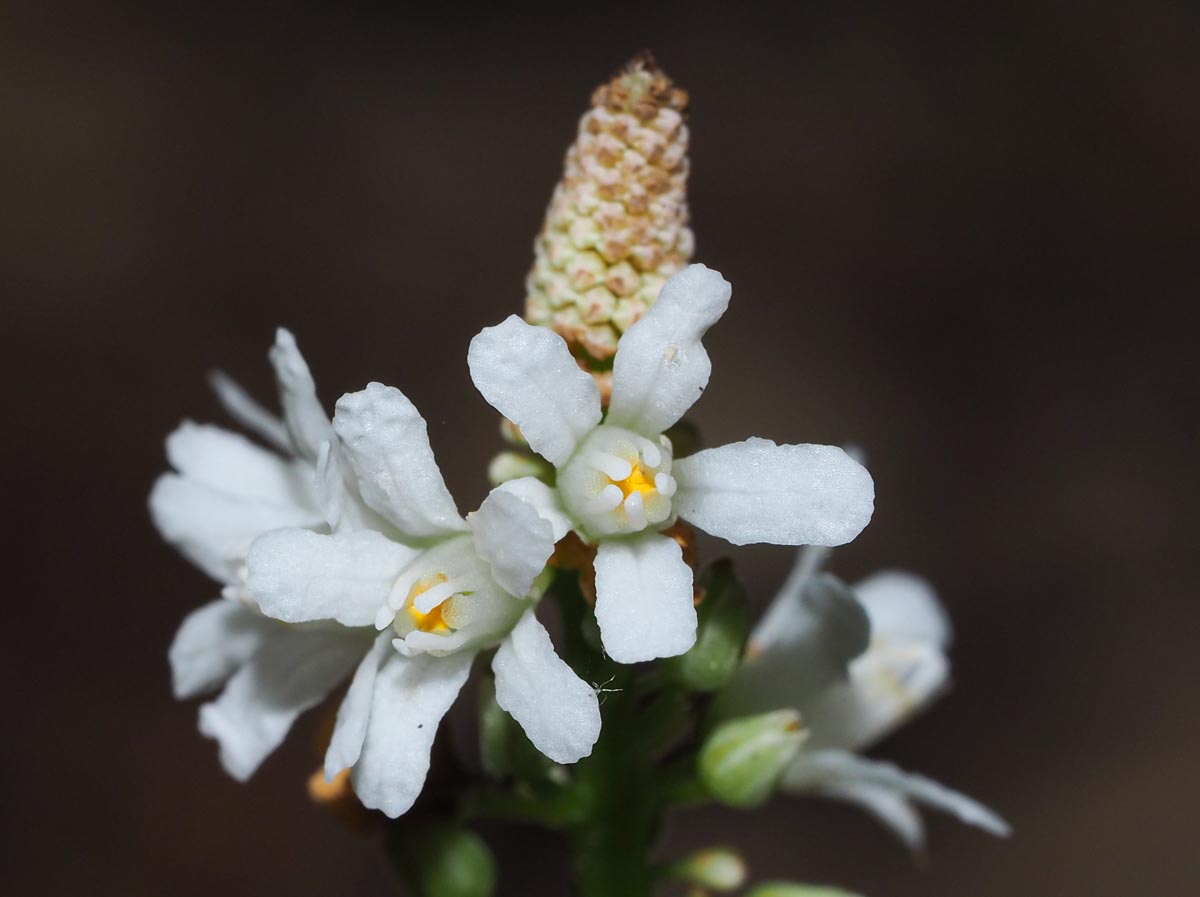The first time I remember seeing wandflower was at Duke Gardens. I was visiting there with my aunt and uncle, who retired to Durham while I was living nearby. I would go on walks and hikes with them every weekend for the four years we overlapped, except in summer when they escaped the North Carolina heat. My aunt returned to NY to run Garden Holiday at Mohonk in the much cooler Catskills, a very sensible seasonal migration.
As we were admiring these Galax plants she walked up and grabbed a seedpod. She kept it a while on a shelf she had as a seasonal nature display by her door, and then gave it to me since living in an apartment she had no way to grow it. I managed to get some to germinate though in the hot summers of central North Carolina they never thrived. When I moved to the mountains of east Tennessee, I brought some Galax along, only to discover some growing wild along my driveway. At least the ones I brought enjoyed the move, since in that home I was living at 2500 feet, and it was cool in the summer.
Galax urceolata is a close relative of my favorite plant, Shortia. They are both in the Diapensiaceae, a small plant family with only 15 species. I have grown quite a few members of this family but am partial to Galax and Shortia since they are native to this region. Once when hiking near Asheville I must have caught them right at their peak in the taller mountains, coming across literally thousands in full bloom, a spectacular show.
The Galax blooming in my garden now is from Sandy Mush Herb Nursery. At an elevation of 3300 ft., with property they have in a conservation easement up to nearly 5000 feet, it is a perfect habitat for them. I first ordered this plant from Sandy Mush back in 1995 for one of my previous yards. They have been a great plant source for decades, adding many treasures to my assorted gardens.
The common name wandflower is because the way flowers grow on stalks or wands. This photo shows a closeup near the top of the stalk, with a macro view of open flowers and more yet to open. Though each flower is tiny, less than a quarter inch wide, they have a Lilliputian beauty when you really zoom in to see the details.
It grows in mountains from Maryland to Alabama but are most at home in the southern Appalachians. Their attractive evergreen leaves have unfortunately led to their decline. They are very pretty and stay fresh and shiny for weeks after being picked. They are prized for seasonal winter holiday displays, since some leaves stay green while others turn red. Though many places limit leaf collection, informally they are still frequently harvested and have become locally rare. It is unfortunate that an admiration of nature can too often lead to overexploitation. I hope there are always lonely places in the mountains here where these beautiful flowers can bloom as summer arrives and blanket the forests with their colorful leaves all winter. If I had a magic wand, I would create a hidden forest just for wandflowers.
